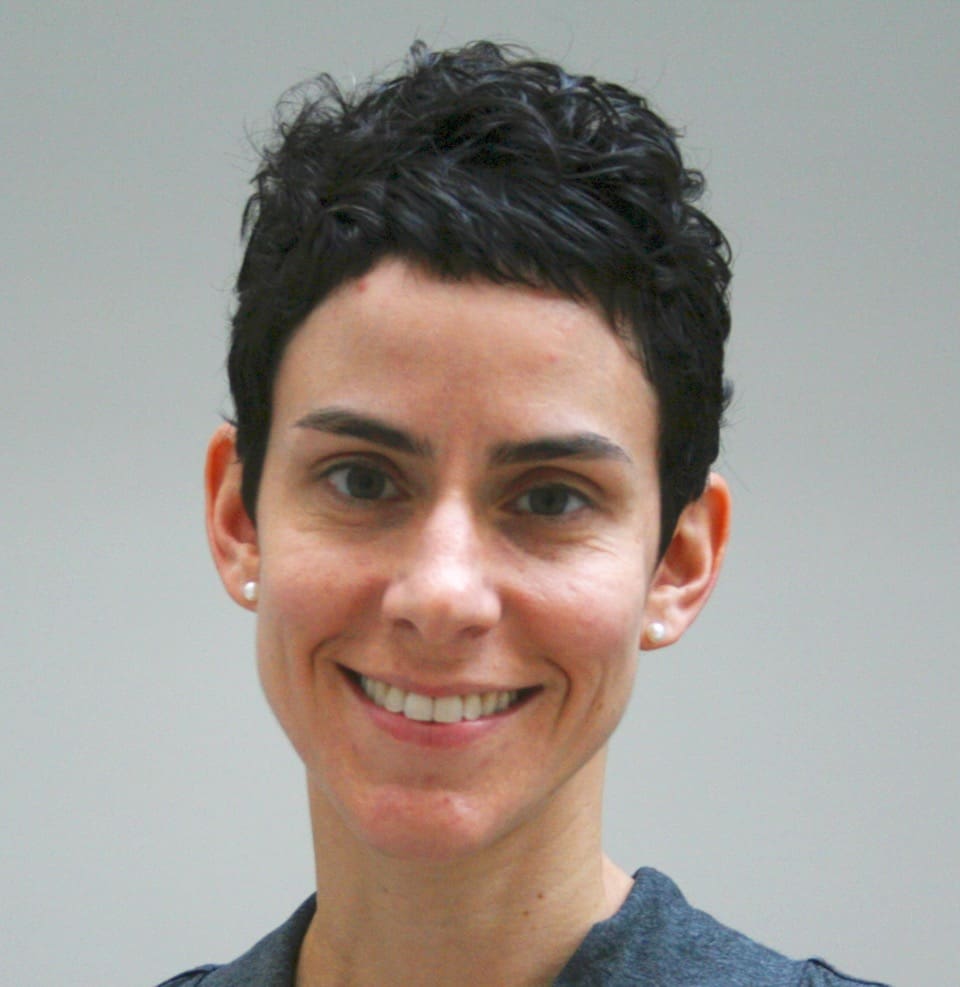Jessica Hanover Brings the Power of Perspective: How Diverse Experience Fuels Success in Corporate Affairs Leadership

Jessica Hanover is not your typical Corporate Affairs professional – and that’s her greatest asset. With a background spanning Mathematics, Neuroscience, Equity Research and Business Development, Jessica has spent the past 20 years exploring every facet of the healthcare industry to master what she loves most: tackling unmet patient needs.
We sat down with Jessica to learn how her diverse experience has shaped her approach to Corporate Affairs and identify key insights to inspire other companies and communicators along their journeys of bringing innovation to market. Our takeaway: Integrating diverse knowledge, experiences, and skillsets isn’t just an advantage—it’s a force multiplier for mastering multi-audience communications in today’s complex landscape. (This conversation has been edited and condensed.)

Q: Your background is unusually diverse. Tell us about your career journey.
Jessica: In high school, I spent summers volunteering at a camp for kids with cerebral palsy. In college, I majored in applied math focused in medical sciences, which sparked my passion for neuroscience. Discovering how brain research could help patients set my career in motion and led me to a PhD at UCSF, where I studied plasticity of the developing visual cortex. Importantly, I also learned how to ask the right questions, think critically, and communicate complex ideas to diverse audiences.
Fresh out of grad school, I jumped at an opportunity at investment bank RW Baird. I didn’t know an income statement from balance sheet, but my scientific training and data analysis skills landed me on the biotech Equity Research team. There, I learned how the investment ecosystem fuels innovation to deliver new therapies to patients. A decade ago, I joined Cerus and dove into a new-to-me field of blood safety and availability in transfusion medicine.
Q: At Cerus, you worked in medical affairs, commercial and market access; how did these roles lead you to Corporate Affairs?
Jessica: I was hired to build Cerus’ inaugural U.S.-based Medical Science Liaison (MSL) program ahead of our first FDA approvals for the INTERCEPT Blood System for platelets and plasma. With the first new blood products in 20 years, we knew customer education would be key.
The MSL team created pathways for patient access through clinician education, health policy influence, and reimbursement solutions. By engaging directly with clinicians, hospitals, and blood centers, we identified key obstacles. When we learned blood had become a commodity, we helped establish billing codes and payment rates, transforming how our products were perceived and improving market access.
In 2020, as Cerus focused more on audience engagement, I proposed unifying this work under one Corporate Affairs umbrella to connect teams and craft messaging to target each stakeholder.
Q: How did Corporate Affairs elevate Cerus’ R&D and commercialization efforts?
Jessica: Cerus has a rare, decades-long history. For over 30 years, its founders and team have worked to safeguard the global blood supply—developing the first CE-marked and FDA-approved pathogen inactivation system for platelets and plasma, running some of the largest phase 3 studies in transfusion medicine, and introducing three novel blood components in the U.S. in the past decade.
Our Corporate Affairs team was able to draw on this rich story to communicate the company’s expertise to stakeholders. Investors, blood centers, hospitals, government funding partners, payers, clinicians, suppliers, and employees each have unique perspectives on transfusion medicine and distinct information needs. It was our job to understand this and respond to them.
Maintaining open channels of communication and keeping awareness high is a big part of how Corporate Affairs comes into play. In the small but mighty transfusion medicine community, it’s been a privilege to support Cerus’ mission: helping customers do everything in their power to deliver safe, effective blood products to patients.
Q: How did your broad roles at Cerus inform your approach to Corporate Affairs? What were the synergies and challenges?
Jessica: From clinicians to investors to government representatives, the same holds true: communication requires careful listening, understanding your audience, and tailoring messages that resonate.
Consolidating communications under Corporate Affairs connected Government Affairs, Market Access, and Investor Relations, enabling us to share ideas, close gaps, and refine messaging across audiences.
Cerus’ 30-year history created a good challenge for us: to focus, prioritize, and pivot as needed. We’re fortunate to have a forward-thinking CEO, Obi Greenman, who has always recognized the value of effective communications as vital to our long-term strategy.
Q: How do you measure the ROI of Corporate Affairs?
Jessica: ROI varies by area. In Investor Relations, it’s measured through outreach, targeting, and ongoing conversations, as well as a dynamic investor profile. But for Public Policy projects with long-term deliverables, you need to identify intermediate milestones to show you are on the right track.
As with science, measuring ROI in Communications can be trickier. You can have the best experimental data imaginable, but if you can’t relay the big picture, it won’t have an impact. Similarly, you can tell the best story in the world, but if it doesn’t reach your audience, it’s like the falling tree in the forest that no one hears. ROI has to encompass both the message and its messaging.
Q: How and when should CEOs invest in communications to drive business momentum?
Jessica: Companies often underestimate the time and resources needed to build brand awareness, reputation and credibility, so it’s important to take a long-term view. For new companies, there are cost-effective strategies to build up your company name like conference presentations, publications, and utilizing LinkedIn. Draw from your company’s unique history to craft a compelling narrative and repeat it. If it’s going to take the proverbial seven exposures to internalize a story, then it’s never too early to start communicating!
Q: What advice do you have for corporate communicators navigating policy under a new administration?
Jessica: When change is coming, it’s critical to know your audience. Immerse yourself in news flow from the Hill to understand shifting priorities and how policymakers think about certain topics. Participate in annual advocacy days held by industry groups to start conversations with government stakeholders. An important lesson I’ve learned is never to waste an opportunity to make your request, because these are the stakeholders making decisions about where to allocate spending. Finally, track the changes and keep an open mind – creative thinking has to be on the agenda.
Q: What are the biggest challenges you see for biotech Corporate Affairs leaders today?
Jessica: Prioritization is key. Aligning the team on where to focus, how to communicate, and to whom to direct your messages are important as things become more complex. This requires having a multi-disciplinary team that’s embedded with other functional groups within your company, because the best way to speak to a stakeholder is to learn their language. Hang out with colleagues in Commercial, R&D, and Supply Chain. The more we learn about our audience, the more we’re able to contribute.
Q: What advice would you give to professionals looking to build a career in biotech Corporate Affairs? What skills or experience-set is the most important?
Jessica: Be curious and ask questions. Learn from colleagues and stay informed about competitors. Read and write, and then read and write some more — everything we do involves the written word. Follow a variety of publications to study their communication styles. The more exposure you have, the stronger your skills will become.
Q. You’ve had an exciting career so far. What’s next for you?
Jessica: I’m excited to help shape new policies and approaches to healthcare as I continue doing what I love: working at the intersection of public policy and communications to advocate for patient access to innovation and find new ways to share what I’ve learned with the broader community. Ultimately, if I can use my experience in Corporate Affairs to ensure an audience for every “tree that falls” in the grand forest of Life Sciences, I’ll have done my job.
